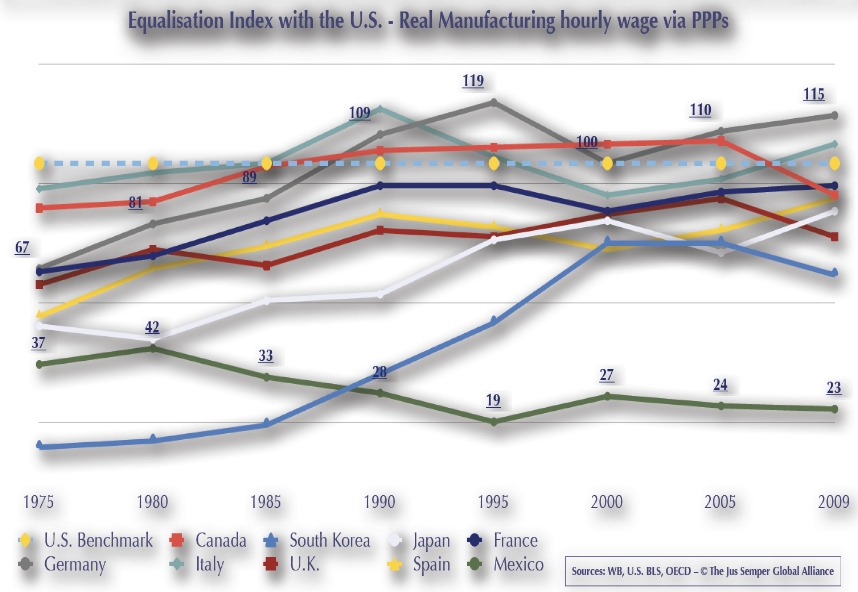- From an equalisation perspective, since 1975, whilst México consistently worsens its best index by 50% –from 46 in 1981 to a meagre 23% in 2009– the trend shown by the other countries in the last 34 years is of a clear progress in their equalisation indices, particularly of South Korea, despite the losses of the last two years. It should be noted that Mexico’s wage pauperisation trend is the direct result of a deliberate and perverse State policy, which blocks any possibility of real wage recovery. The “modern-slave-work” system remains the policy “par excellence” of the Mexican State in response to “market demands”.
- In this way, each year it merits to contrast the enormous paradox of Mexico’s performance with South Korea’s. Whilst South Korea’s wage index moved from 11 in 1975 to 65 in 2009 –in 2007 it scored an 83 index– Mexico does it in the opposite direction, moving from a 46 in 1981 –its best index– to a 23 index in 2009. This exposes the absolute submission of the Mexican State to the demands of marketocracy.
- On another account, Japan surpasses its best equalisation index recorded in 2000 (82) and reverts the stagnation that it had been enduring, by now increasing its equalisation of 72 in 2007 to 85 in 2009. Germany and Italy maintain a surplus in wage competitiveness –in purchasing power terms– vis-à-vis their U.S. counterparts, with indices of 115, and 106 respectively.
- In contrast, Canada dropped from a surplus of 108 in 2007 to 90 in 2009, just above the 88 index recorded in 1980. France and Spain still show a positive trend since 2000, despite the ground lost since 2007, whilst the UK recorded a heavy drop since 2007, from a 95 index to a 77 in 2009.
|











